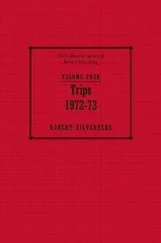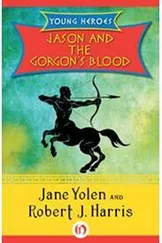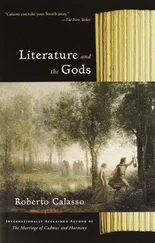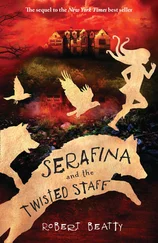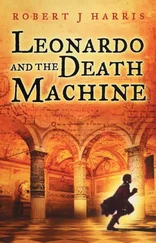The final strong fragment from that part of the world is of a compartment of a troopship. He is on his way home. The compartment is empty and unused. He is alone on a bunk made of canvas laced to a steel frame, like a trampoline. There are five of these to a tier, tier after tier of them, completely filling the empty troop compartment.
This is the foremost compartment of the ship and the canvas in the adjoining frames rises and falls, accompanied by elevator feelings in his stomach. He contemplates these things and a deep booming on the steel plates all around him and realizes that except for these signs there is no indication whatsoever that this entire compartment is rising massively high up into the air and then plunging down, over and over again. He wonders if it is that which is making it difficult to concentrate on the book before him, but realizes that no, the book is just hard. It’s a text on Oriental philosophy and it’s the most difficult book he’s ever read. He’s glad to be alone and bored in this empty troop compartment, otherwise he’d never get through it.
The book states that there’s a theoretic component of man’s existence which is primarily Western (and this corresponded to Phædrus’ laboratory past) and an esthetic component of man’s existence which is seen more strongly in the Orient (and this corresponded to Phædrus’ Korean past) and that these never seem to meet. These terms “theoretic” and “esthetic” correspond to what Phædrus later called classic and romantic modes of reality and probably shaped these terms in his mind more than he ever knew. The difference is that the classic reality is primarily theoretic but has its own esthetics too. The romantic reality is primarily esthetic, but has its theory too. The theoretic and esthetic split is between components of a single world. The classic and romantic split is between two separate worlds. The philosophy book, which is called The Meeting of East and West, by F. S. C. Northrop, suggests that greater cognizance be made of the “undifferentiated aesthetic continuum” from which the theoretic arises.
Phædrus didn’t understand this, but after arriving in Seattle, and his discharge from the Army, he sat in his hotel room for two whole weeks, eating enormous Washington apples, and thinking, and eating more apples, and thinking some more, and then as a result of all these fragments, and thinking, returned to the University to study philosophy. His lateral drift was ended. He was actively in pursuit of something now.
A sudden cross-gust of cold air comes heavy with the smell of pines, and soon another and another, and as we approach Red Lodge I’m shivering.
At Red Lodge the road’s almost joined to the base of the mountain. The dark ominous mass beyond dominates even the roofs of the buildings on either side of the main street. We park the cycles and unpack them to remove warm clothing. We walk past ski shops into a restaurant where we see on the walls huge photographs of the route we will take up. And up and up, over one of the highest paved roads in the world. I feel some anxiety about this, which I realize is irrational and try to get rid of by talking about the road to the others. There’s no way to fall off. No danger to the motorcycle. Just a memory of places where you could throw a stone and it would drop thousands of feet before coming to rest and somehow associating that stone with the cycle and rider.
When coffee is finished we put on the heavy clothing, repack and have soon traveled to the first of many switchback turns across the face of the mountain.
The asphalt of the road is much wider and safer than it occurred in memory. On a cycle you have all sorts of extra room. John and Sylvia take the hairpin turns up ahead and then come back above us, facing us, and have smiles. Soon we take the turn and see their backs again. Then another turn for them and we meet them again, laughing. It’s so hard when contemplated in advance, and so easy when you do it.
I talked about Phædrus’ lateral drift, which ended with entry into the discipline of philosophy. He saw philosophy as the highest echelon of the entire hierarchy of knowledge. Among philosophers this is so widely believed it’s almost a platitude, but for him it’s a revelation. He discovered that the science he’d once thought of as the whole world of knowledge is only a branch of philosophy, which is far broader and far more general. The questions he had asked about infinite hypotheses hadn’t been of interest to science because they weren’t scientific questions. Science cannot study scientific method without getting into a bootstrap problem that destroys the validity of its answers. The questions he’d asked were at a higher level than science goes. And so Phædrus found in philosophy a natural continuation of the question that brought him to science in the first place, What does it all mean? What’s the purpose of all this?
At a turnout on the road we stop, take some record photographs to show we have been here and then walk to a little path that takes us out to the edge of a cliff. A motorcycle on the road almost straight down beneath us could hardly be seen from up here. We bundle up more tightly against the cold and continue upward.
The broad-leafed trees are all gone. Only small pines are left. Many of these have twisted and stunted shapes.
Soon stunted pines disappear entirely and we’re in alpine meadows. There’s not a tree anywhere, only grass everywhere filled with little pink and blue and white dots of intense color. Wildflowers, everywhere! These and grasses and mosses and lichens are all that can live here, now. We’ve reached the high country, above the timberline.
I look over my shoulder for one last view of the gorge. Like looking down at the bottom of the ocean. People spend their entire lives at those lower altitudes without any awareness that this high country exists.
The road turns inward, away from the gorge and into snowfields.
The engine backfires fiercely from lack of oxygen and threatens to stop but never does. Soon we are between banks of old snow, the way snow looks in early spring after a thaw. Little streams of water run everywhere into mossy mud, and then below this into week-old grass and then small wildflowers, the tiny pink and blue and yellow and white ones which seem to pop out, sun-brilliant, from black shadows. Everywhere it’s like this! Little pins of colored light shoot forth to me from a background of somber dark green and black. Dark sky now and cold. Except where the sun hits. On the sun side my arm and leg and jacket are hot, but the dark side, in deep shadows now, is very cold.
The snowfields become heavy and show steep banks where snowplows have been. The banks become four feet high, then six feet, then twelve feet high. We move through twin walls, almost a tunnel of snow. Then the tunnel opens onto dark sky again and when we emerge we see we’re at the summit.
Beyond is another country. Mountain lakes and pines and snowfields are below. Above and beyond them as far as we can see are farther mountain ranges covered with snow. The high country.
We stop and park at a turnoff where a number of tourists take pictures and look around at the view and at one other. At the back of his cycle John removes his camera from the saddlebag. From my own machine I remove the tool kit and spread it out on the seat, then take the screwdriver, start the engine and with the screwdriver adjust the carburetors until the idling sound changes from a really bad loping to just slightly bad. I’m surprised at how all the way up it backfired and sputtered and kicked and gave every indication it was going to quit but never did. I didn’t adjust them, out of curiosity to see what eleven thousand feet of altitude would do. Now I’m leaving them rich and sounding just bad because we’ll be going down some now toward Yellowstone Park and if they aren’t slightly rich now they’ll get too lean later on, which is dangerous because it overheats the engine.
Читать дальше


